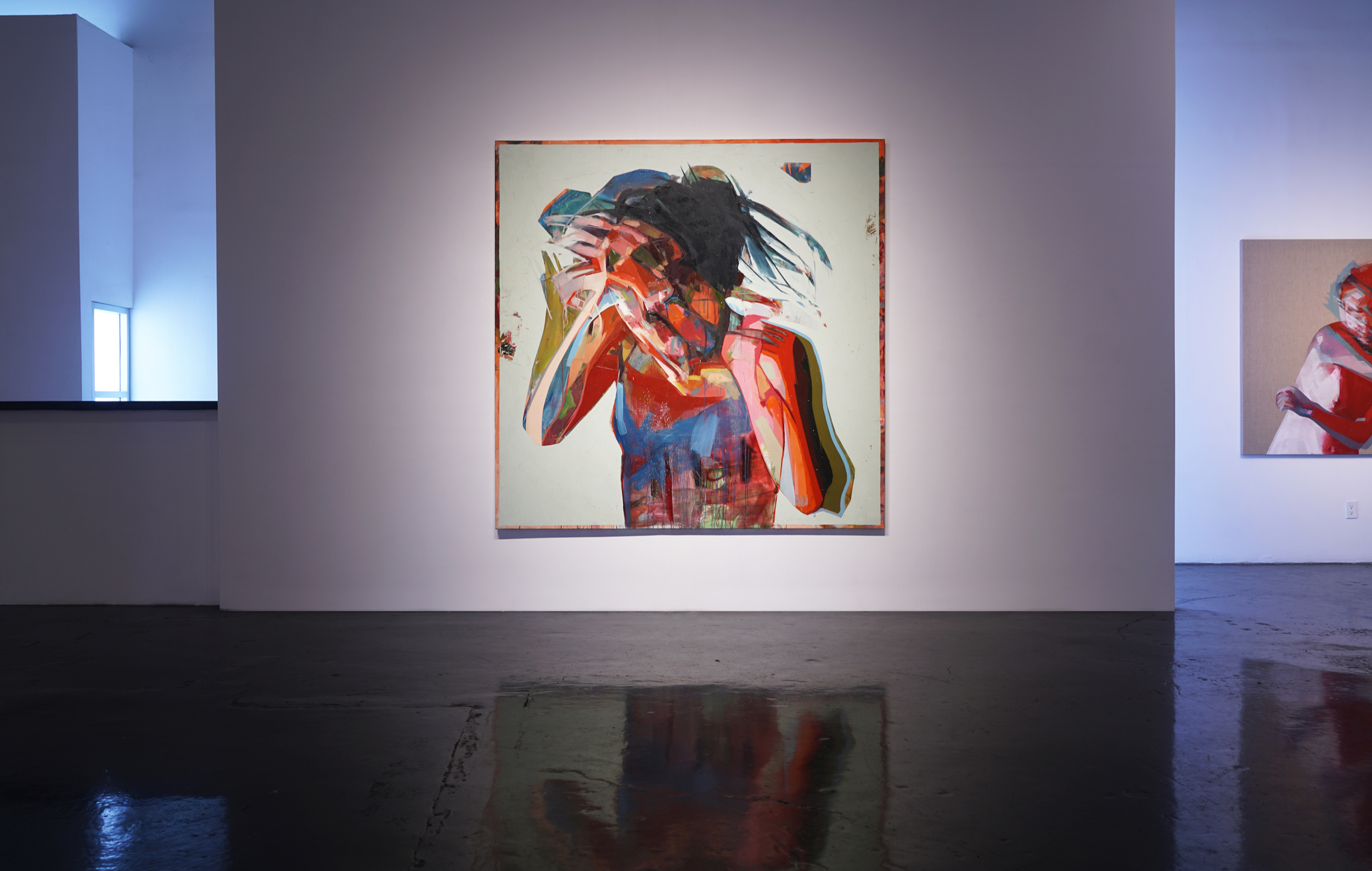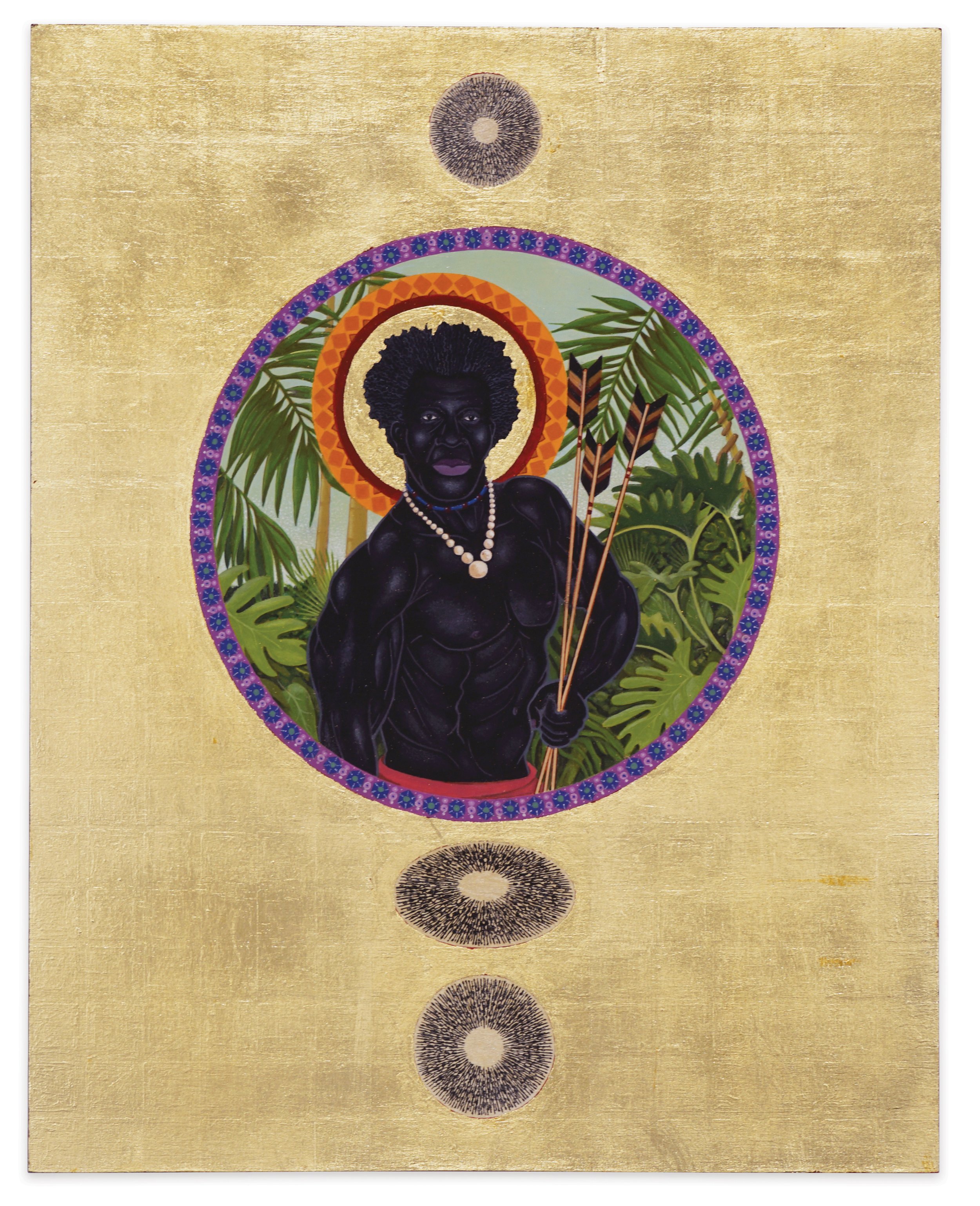He Willed Himself Into Passivity, Became the Passenger Behind Her Eyes, 72”x72”
What is your most treasured possession? I possess nothing, so it’s not so relevant. Maybe my answer, cliche as it is, friends and memories. I’ve had a very rich life to be grateful for, but also lost so much over many years, had to sacrifice so much to try to achieve my goals – apartment, cars, artworks, vacations, all gone….in pursuit of something truly great. My new project, that is still very much in the balance.
Where is your ideal escape destination? Oh, that’s easy, escape to see my godson in Australia, my goddaughter in Denmark, my mum in London and a few other jokers along the way.
What’s the worst survival job you’ve ever had? I was a bouncer at a rough club in the Midlands in the late 80’s. Seeing blood many nights, and occasionally my own, was a clear message to get away from that environment. Even my brother got stabbed, lost 5 pints of blood and should have died. He’s fine now. Other friends, not fine. Second place was working in a factory on the production line, same thing every day, just awful. Bring on the robots.
What TV series from your youth best describes your approach to life? We were poor, so TV access was rare. I’d say more influential was my addiction to comic books. The Dark Knight, V for Vendetta, Watchmen, Sandman….outsider heroes. All of those influences have made me try to be and do good and also obsess about drawing and painting the human figure.
If you could change one thing about yourself, what would it be? A lot of things! But all the things I would change are repercussions from my upbringing, and if I could change that, I would have gotten decent education, mentorship and opportunity.
What is your most treasured memory? Too many. Hiking through Iceland. Surfing waves of consequence with my BFF. Freediving to the darkest depths. Making a good painting. Falling in love. Maybe one of the nicest was, after recovering, helping a friend who was desperately ill, and seeing him survive. I still claim I saved his life when we bump into each other but the truth is, it was all him.
What makes you smile? Grease, the movie. Queen at Live Aid, Bill Hicks, David Cross, Prince, School of Rock, Ricky Gervais, Fawlty Towers, Public Enemy, Star Wars….and a million other movies and TV shows….my dog Frankenstein, all my friends constantly mocking me.
What makes you cry? Everything. The more you know, the more empathy and clarity you have, the more you realize there are endless real-world problems that could be so easily fixed. But we are far from utopia and corporations, media and governments have all the power and seem corruptly intertwined.
What is your go-to drink when you toast to a sale? Old Fashioned. Sale or not.
After an all-nighter, what’s your breakfast of champions? I don’t do all-nighters, too old for that, we are all into Brazilian Jiu jitsu, so we eat well, rest, which works for mind and body. Plus my current project is all absorbing so there’s no days off.
Who inspires you? Boyan Slat.


































